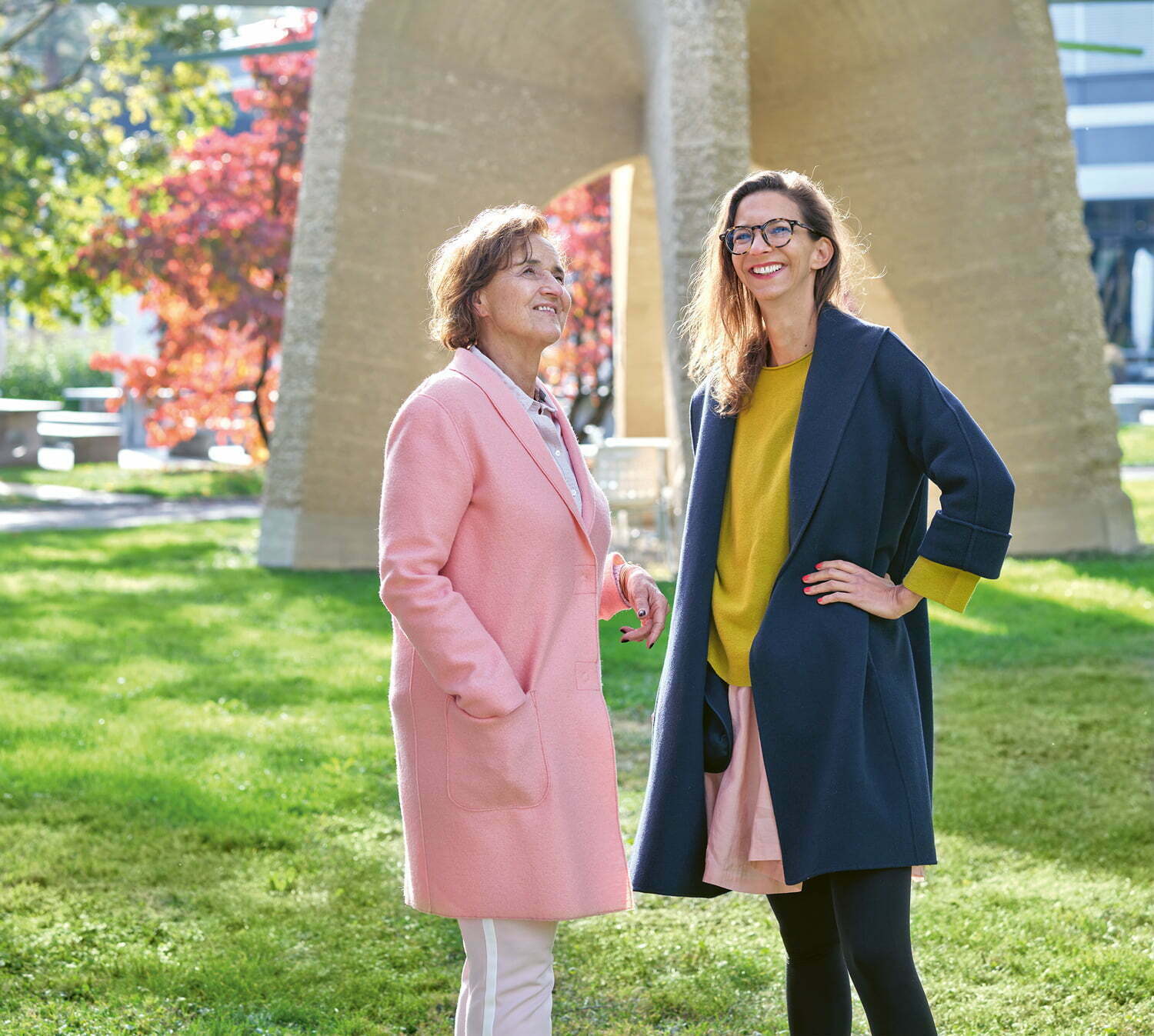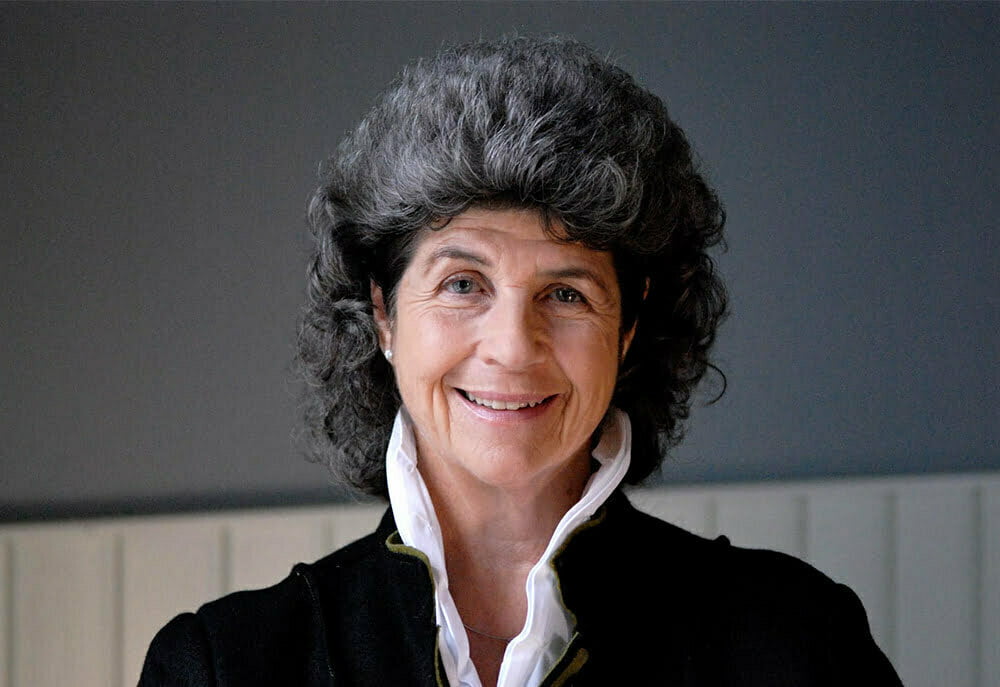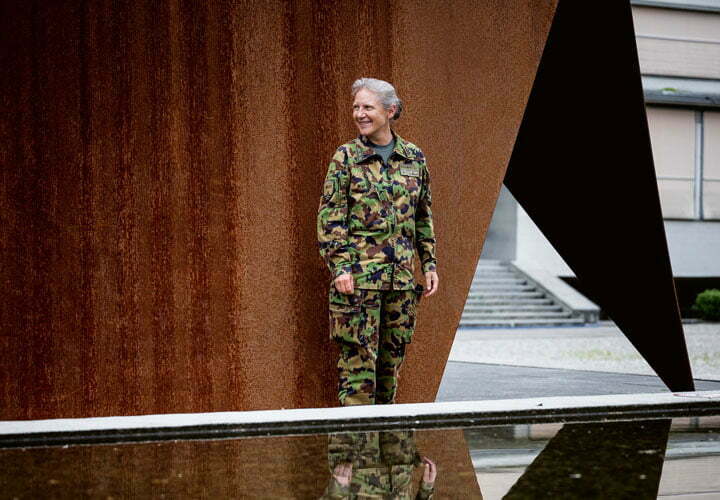Connected to ETH over three generations
Talking to the architects and ETH donors Erica and Lea Rickenbacher about their studies draws out exciting insights into contemporary history. Lea Rickenbacher’s professional practice, on the other hand, raises questions highly relevant to today.

© ETH Foundation / Das Bild
© ETH Foundation / Das Bild
How do you remember your student days?
Erica Rickenbacher – I grew up in a household of master builders, where there was a lot of discussion and modern architecture was a common topic. Despite this, I experienced my studies as a dramatic broadening of my horizons, once ETH had entered my life with a bang. I studied in the turbulent times of ’68, and the architecture department was housed temporarily in the Globus building. The educational programme was very broad, sociology was strongly present and there was a lot of reading and discussion. Our sociopolitically relevant act at the beginning of our studies was to buy a sofa on which we could spend a lot of time doing just that. (Laughs)
Lea Rickenbacher – My experience was also that a “window of discourse” opened up for me with my studies at ETH. Here you have the opportunity to study with some of the best in the world, to be in close contact with the latest developments. We were the first class to learn how to draw on the computer. It was an intense time, with lots of nights spent working. It’s important to have such places that focus on bringing about further developments and ensuring excellence. ETH taught me never to stand still.
But both of your histories with ETH actually stretch even further back.
ER – Indeed. My grandmother would have liked to study, but wasn’t allowed to. My mother was then allowed to go to university. She enjoyed working in the lab, and decided to study pharmacy at ETH. There were also practical considerations: working at a pharmacy had the advantage that it could be done on a part-time basis and was thus compatible with bringing up a family. This activity outside the home was very important to my mother – she wouldn’t have “had to” go to work, as it was still thought of at the time.
Why are you ETH Zurich donors today?
ER – I’d like to enable others to have the same formative experiences I enjoyed at this university.
LR – Out of gratitude, and pride. It makes me happy whenever I see a university ranking. ETH enjoys a worldwide reputation: before starting at ETH, I spent a year studying art and design in New York, which made me realise I wanted to study architecture. My lecturer said: “Why don’t you go home? ETH is one of the best architecture schools in the world!”
Lea, a few years after graduating, you went into business with a former fellow student and set up “Rickenbacher Zimmerli Architektur”. What interests you about architecture as a profession?
LR – Architecture is about aesthetics as well as functionality and practicality, and also always has to be “state of the art”. The current issue in architecture is sustainability. Keeping all these different aspects in mind, it’s important to find the optimal point. Construction also has a sociopolitical dimension: Switzerland is small, space is finite, and our society is getting older – how do we deal with all that? At ETH you learn to think and discuss in these dimensions. We also enjoy having these discussions with our clients, who come mainly from the area of
residential construction.
You two have interesting living arrangements in close proximity to each other – what are the advantages of this for you?
ER – One of the advantages is definitely that the model allows the working generation to benefit from support when there are small children to look after. That’s how I do it with Lea together with the whole family, and that’s how my mother did it with me.
LR – The pace in architecture has been getting faster and faster in recent years. The flexibility associated with this physical proximity is very valuable.
Lea, you have a daughter. Do you hope she’ll carry on the family tradition and study at ETH?
ER – Sometimes we actually joke that we’re already working on the fourth generation.
LR – My daughter is free to do what she wants. All I can tell her is that I loved studying here!


